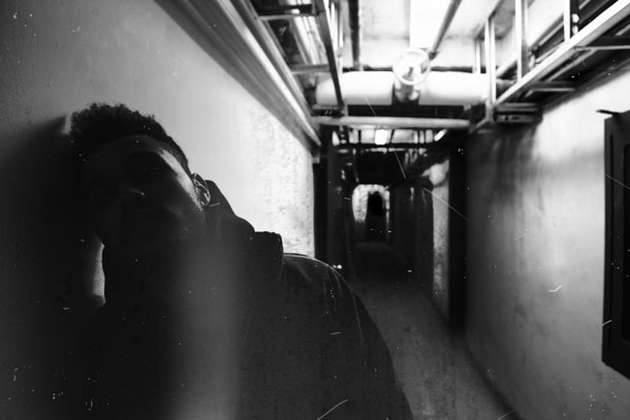
Art, in any medium, can serve a wide variety of different functions. When used as a tool to convey perspective – to explore truths, in particular those often shied away from, in a way that is unique to its creator yet universal in its underlying themes – is when art is at the very height of its power. The music world has featured many works presented within that artistic mindset, but none more so in recent years than The Weeknd’s trilogy of albums released last year. Through a narrative presented in increasingly darker shades of grey, The Weeknd examines a world so bleak it dares to be avoided, yet so precise in its truth, it is impossible to shake.
At the center of House of Balloons, Thursday, and Echoes of Silence is a drug narrative unflinching in its perspective and piercing in its truth –- an exploration of what happens when the initial glamour of substance abuse subsides and gives way to a tortured clarity of what lies beneath the surface. Operating within a fog of rapidly decreasing higher functions, there is a disconnect – both emotional and moral – in both Abel Tesfaye as a narrator and in the people around him. And while this fog has been explored at great lengths before, Tesfaye chooses to focus on a facet not often touched on. The women and men in the world of The Weeknd act as both manipulators and as willingly manipulated, existing in a contradictory space in which all are aware of the depravity around them yet still choose to both embrace and become victim to it.
In this light, the never-ending party that is the narrative backbone behind The Weeknd’s tracks is not celebratory, but nightmarish. Whether it’s paranoia, betrayal, anxiety, claustrophobia, or hopelessness, The Weeknd makes a case that the heart of it all can be found in the most private of places – inside a locked bathroom, amongst the attendees of a dimly-lit house party, or in the darkness of an occupied bedroom. Gone is the traditional image of a house party – the clichéd representation of youth and freedom traded in for a beautifully crafted vision of purgatory. Beyond the half-finished drinks, one night stands, and intoxicated conversation, is a certain unease, an unspoken yet universal understanding that the ground can give way at any moment. House of Balloons, Thursday, and Echoes of Silence capture this fragility with such precision, and such honesty, that it’s easy to forget they are the works of an artist so early into his career. And, as The Weeknd’s narrative continues, so does the sense that these confessions verge on the apocalyptic. As evidenced in tracks such as Thursday’s “Life of the Party,” there is a sense that the citizens of Tesfaye’s gatherings are doing much more than destroying each other – their desperation also emits the feeling of a last hurrah – a final celebration in a world with an increasingly alarming sense of the walls closing in.
Adding to this sense of dread is a blend of electronic work, chopped vocal samples, and sparse guitar that places the music in just as much of a fog as its lyrical narrative does. Producers Doc McKinney and Illangelo’s soundscapes are as detached as they are urgent – creating the same kind of conflicted, confused space that Tesfaye’s lyrics portray. From the slow crawl of the Burial-esque “What You Need” to the pitch-shifted malice of “Initiation,” the music behind Tesfaye’s words manage to capture their nauseating and oppressive nature while at the same time maintaining their uniquely fractured beauty. In fact, everything under The Weeknd label serves to strengthen its perspective – even the art direction, with its recurring theme of a celebration that is anything but joyful, is grainy, out of focus, and rife with contradictory narrative. What this all amounts to is an impressively tangible presentation of ideas that are anything but – with both a depth of scope and a singularity in vision that is becoming increasingly rare in contemporary music.
And as much as The Weeknd’s message both musically and lyrically has been consistent since the debut of House of Balloons, there is an undeniable evolution sewn throughout the narrative of each work that is perhaps the stories’ most tragic aspect of all – the unraveling of Tesfaye as a narrator. From his confident lines of seduction in “High for This” to his delusional proclamations of divinity in Thursday’s final track, there is a very apparent degradation of Tesfaye’s mental stability the further we delve into his world. Where he stands in the closing moments of Echoes of Silence – desperate, broken, and alone – is a portrait of the character that began the trilogy with such villainess confidence reduced to a shell of what once was. It’s a surprisingly final statement for an artist that’s only just begun – a barely-there death rattle that works as a fitting end to the character just as much as it represents the final collapse of the world around him. And yet, given the cyclical, never-ending nature of the events that unfold within the three records, one can’t deny the feeling that this breaking point is anything but final. Given where we stand at the end of Echoes of Silence, it’s virtually impossible to predict where Tesfaye can go from here. The Balloons trilogy delves so deeply into its subject that it can’t help but feel all-encompassing – its promise of the cycle repeating itself acting as a brilliant end to a story whose tragedy hinges so much on its infiniteness. In fact, that may be the narrative’s greatest triumph of all: that even when we leave it behind, it’s with the knowledge that its cast of characters continue on, helplessly, forever.

